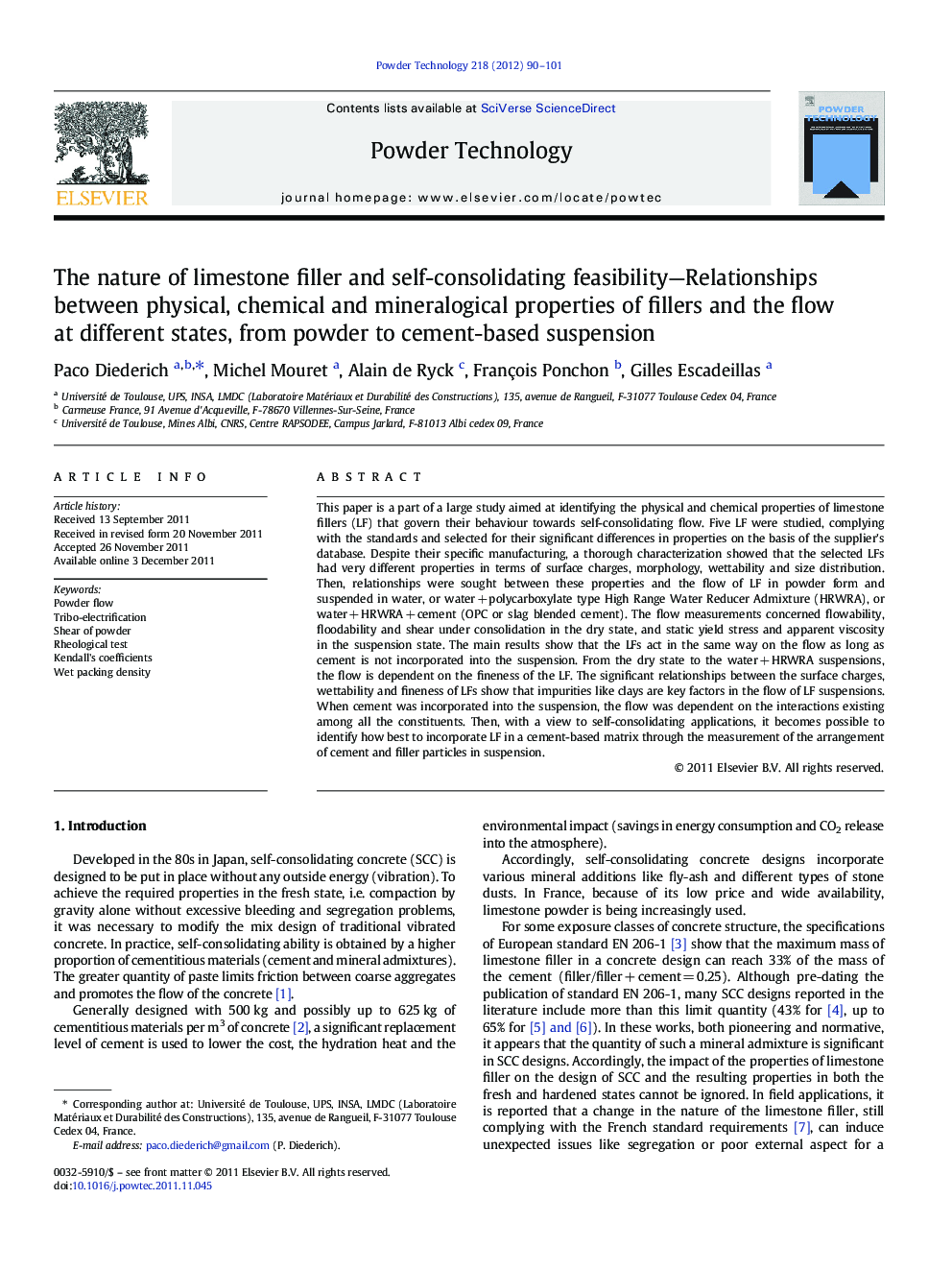| Article ID | Journal | Published Year | Pages | File Type |
|---|---|---|---|---|
| 237355 | Powder Technology | 2012 | 12 Pages |
This paper is a part of a large study aimed at identifying the physical and chemical properties of limestone fillers (LF) that govern their behaviour towards self-consolidating flow. Five LF were studied, complying with the standards and selected for their significant differences in properties on the basis of the supplier's database. Despite their specific manufacturing, a thorough characterization showed that the selected LFs had very different properties in terms of surface charges, morphology, wettability and size distribution. Then, relationships were sought between these properties and the flow of LF in powder form and suspended in water, or water + polycarboxylate type High Range Water Reducer Admixture (HRWRA), or water + HRWRA + cement (OPC or slag blended cement). The flow measurements concerned flowability, floodability and shear under consolidation in the dry state, and static yield stress and apparent viscosity in the suspension state. The main results show that the LFs act in the same way on the flow as long as cement is not incorporated into the suspension. From the dry state to the water + HRWRA suspensions, the flow is dependent on the fineness of the LF. The significant relationships between the surface charges, wettability and fineness of LFs show that impurities like clays are key factors in the flow of LF suspensions. When cement was incorporated into the suspension, the flow was dependent on the interactions existing among all the constituents. Then, with a view to self-consolidating applications, it becomes possible to identify how best to incorporate LF in a cement-based matrix through the measurement of the arrangement of cement and filler particles in suspension.
Graphical abstractRelationships between dry state and in suspension properties of Limestone powders were studied with a view to self-consolidating concrete design. When used in cementitious suspensions, the flow properties were guided by the complex interactions between all the components. The variations in the flow properties could be apprehended by the wet packing density measurement.Figure optionsDownload full-size imageDownload as PowerPoint slide
